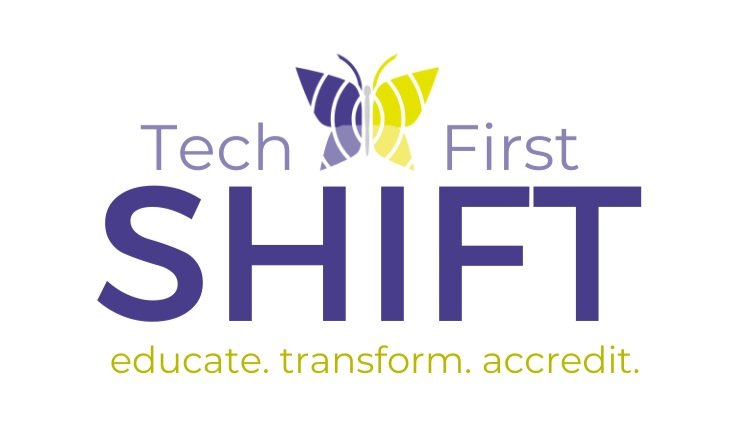Technology First: Are You Ready for the Journey?
Technology First - What It Is/What It Isn’t
Technology First. You have probably noticed that this term has gained popularity in recent years. While some of you may be able to confidently discuss the concept, many of you probably feel that you have a “less than expert” understanding of it. And, I would venture to guess that most of you have heard some variation of the following - either expressly or implied: “Technology will address your organization’s workforce crisis and/or budget shortfalls.” Given the prevalence of the term Technology First and those big promises that seem to accompany it, nearly everyone is interested in learning more.
To begin, let’s make sure we clearly establish what the term “Technology First” means. In a nutshell, this term is used to describe an approach to services that embraces the application of technology to support people to live their most independent, productive lives possible. It does not equate to eliminating in-person support. It does mean that people we support are able to benefit from modern technologies while still receiving necessary in-person services from caring, trained staff. The balance of technology and in-person support is different for each individual because it depends on the unique needs and circumstances of the person supported.
Perhaps you noticed that the description of “Technology First” focuses on how technology can benefit the people you support - cost savings and addressing staffing shortages are not even hinted at as potential advantages. That’s because those benefits are sometimes (not always) a by-product of adopting a Technology First approach. With that understanding in place, I’d like to give you a few things to think about as you contemplate whether or not you are ready to adopt a Technology First approach to services. But first, let me tell you a little about my own journey.
My Journey to Technology First
Years ago, when the whole idea of utilizing technology to help people with disabilities was really starting to gain traction, I had the opportunity to build a technology program from the ground up for a large service provider. Up until that point I had primarily served in leadership roles within residential services. Though I enjoyed my work immensely, I found myself ready for a new challenge. So I closed my eyes, took a deep breath and made a leap of faith.
More than a decade later, I find myself in a position that allows me to help others learn about, adopt and implement Technology First best practices. Organizations and agencies that I work with get the benefit of learning from the mistakes I’ve made along the way. Not to brag or anything, but I made my fair share of mistakes! In all seriousness, I have had tremendous success helping provider organizations, state agencies, self-advocates, families and others harness the power of technology - to make the seemingly impossible possible. How, you ask?
On my journey, I have met some truly remarkable people. The kind you find yourself drawn to - highly capable, genuine people who radiate positivity and demonstrate a commitment to making the world a better place. I’m confident that you have crossed paths with such people. You may, at this juncture, be asking yourself what any of this has to do with using technology to support people to be more independent. Fair enough. The truth is, at the heart of every successful technology adoption you will find amazing people like those I’ve described. Knowing this, I encourage you to take some time to reflect on the following:
Who are your “go to” people? You know who I mean. Your superstars. The people you rely on to get things done and to get them done well. They can be in any service area and anywhere on the organizational chart.
What attributes do your “go to” people possess? Are they particularly open-minded, creative, driven, etc.? Can they be considered “influencers” in the organization?
What do your “go to” people have on their plate? What is their capacity to assume additional responsibilities? A note of caution - consider this question from a practical standpoint and not from one based on wishful thinking!
Do your “go to” people have any interest in or skill with technology?
You may have guessed where I’m headed with this whole reflection exercise. Having the right people in the right seats is critical to successfully adopting a Technology First culture. And, yes, I am using the word “seats” quite intentionally. You may have one person spearheading the technology initiative, but that person will need significant support along the way.
Tips on Adopting a Technology First Culture
First and foremost, you’ll need to help staff at every level of the organization understand what it means to adopt a Technology First approach to services. One way this can be accomplished is through formal credentialing and certification programs like those offered by SHIFT. Making sure people are on board and committed to the endeavor is important to the success of the initiative. Even if you are not able to credential or certify all of your staff, think about how you can provide at least some basic information to everyone. New employee orientation sessions, town hall meetings and staff training events are all ways that can help you spread the word.
Another way to garner support in the organization is by forming a technology team whose members have clear expectations, responsibilities, and priorities. This is the group of people who will champion the use of technology in your organization so you should choose members wisely. Look for people who have an interest in technology, have the time to be an active member and who are well-connected in your organization. It is a good practice for the person who is leading your technology initiative to also lead your technology team.
Well thought out systems, processes, policies and procedures will not only support the person spearheading the technology initiative but will minimize mistakes and challenges. If your organization is pursuing Technology First accreditation through SHIFT, you will be guided through the process of developing an Organizational Technology Plan. This is where you will map out the structure your organization needs in order to successfully make the culture shift to a Technology First approach. Just keep in mind that the person leading your technology initiative may be responsible for assembling and organizing the OTP content, but the actual development should be a group effort.
Consider these analogies and how they may help you be more successful with adopting a Technology First approach to services.
You’ve probably been to many different types of restaurants - some good and some less so. What’s the difference? While the quality of the meal is largely dependent on the chef’s skills, if the restaurant lacks things like fresh ingredients, a skilled sommelier, attentive waitstaff, etc. the customer’s experience is diminished. Make sure you equip the person spearheading your technology initiative (i.e. your chef) with an excellent OTP (i.e fresh ingredients, attentive waitstaff, etc.).
Most children begin walking by taking baby steps. As they gain skill and confidence, they take bigger and faster steps. Before you know it, they are running. My point? There is no shame in starting small. Develop some skills, gain experience and build your confidence - then expand your program.
We live in a world that satisfies our need for instant gratification. No longer do we painstakingly write long letters in cursive to our friends or family - we send text messages instead. We don’t use cameras with film that needs to be developed - we snap photos on our phone and apply filters to mask imperfections. Successfully adopting technology is not going to happen overnight. Be patient with the process and don't underestimate how much time is needed to do it right.
Have you ever watched a pit crew in action? When a driver pulls in for a pit stop, the car is surrounded by people, each doing their part to ensure that they get the driver back on the track as quickly as possible. The TV crew doesn’t meander over to change tires or fill the tank. There are skilled, dedicated resources on hand to provide support to the driver. If you are thinking about implementing a Technology First initiative from an “other job duties as assigned” approach, it is unlikely that already overwhelmed staff will make meaningful progress - even if they are your “go to” people.
Regardless of whether you are a fan of Steve Jobs, he is undoubtedly a pioneer in modern technology. Despite the fact that he built a highly successful product based business, it’s pretty clear he recognized that people drive innovation and change (as evidenced by the following quote).
“Here's to the crazy ones, the misfits, the rebels, the troublemakers, the round pegs in the square holes... the ones who see things differently - they're not fond of rules... You can quote them, disagree with them, glorify or vilify them, but the only thing you can't do is ignore them because they change things... they push the human race forward, and while some may see them as the crazy ones, we see genius, because the ones who are crazy enough to think that they can change the world, are the ones who do.”
One of the great things about working in this field is that our colleagues are so open to being helpful. If you hear of an agency or organization who is successfully implementing technology, I’d encourage you to reach out. It has been my experience that people are happy to share current practices as well as what they’ve learned along the way. Don’t hesitate to learn from those that “are crazy enough to think they can change the world”.
One of my passions in life is to set people (and the organizations/agencies/companies they work for) up for success. My hope is that by sharing some best practices, tips and recommendations, you are better able to decide whether you are ready to begin a Technology First journey. If you are, happy trails my friend.


